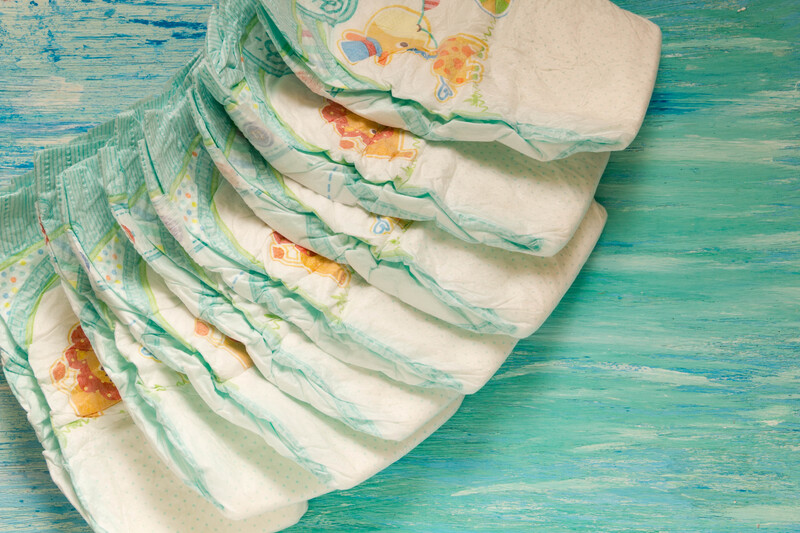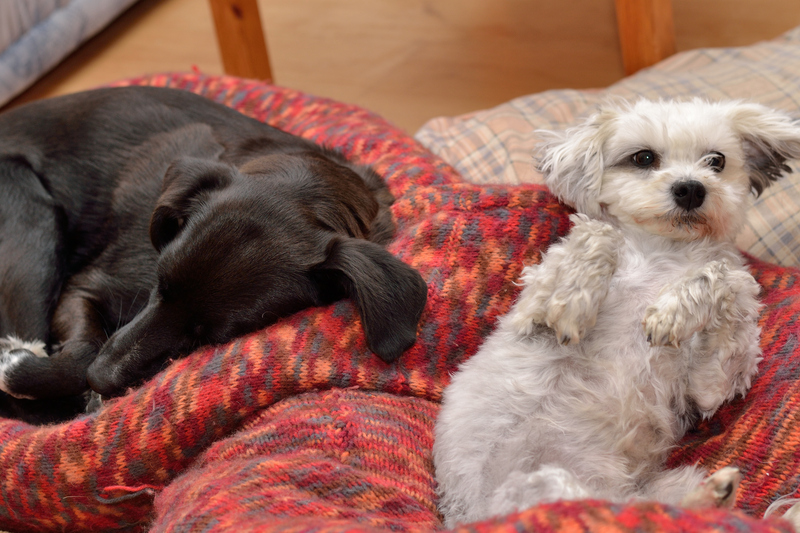Discover the Art of Minimalist Living and Decluttering
Imagine waking up to a serene, clutter-free home--where every item has a purpose, and your mind feels light, focused, and relaxed. That's the essence of minimalist living and decluttering. In an era consumed by materialism, the minimalist lifestyle is a beacon for those seeking peace, simplicity, and intentionality. If you're ready to reclaim your space and transform your life, this comprehensive guide will help you discover the art of minimalism and master the secrets of effective decluttering.

What is Minimalist Living?
At its heart, minimalist living isn't just about having fewer things--it's about making room for more of what truly matters. This intentional way of living focuses on quality over quantity, promoting a sense of well-being, mindfulness, and freedom from the cycle of constant consumption.
Key Principles of Minimalism
- Intentionality: Making deliberate choices about what stays in your life and what goes.
- Functionality: Prioritizing items and routines that serve a purpose.
- Mindfulness: Being present and aware of both your surroundings and habits.
- Quality over Quantity: Investing in fewer, better-quality possessions.
- Freedom: Breaking free from societal pressures that equate possessions with happiness.
The Psychology Behind Decluttering
Minimalist living goes hand-in-hand with decluttering. Psychologists suggest our environment greatly impacts our mood and productivity. Clutter not only crowds physical spaces but also clutters the mind, leading to higher stress and decreased focus. By embracing decluttering tips and strategies, you can minimize distractions and create a sanctuary that nurtures your well-being.
The Emotional Attachments to Things
Often, clutter is more about emotions than objects. We hold onto items for sentimental reasons, out of guilt, or 'just in case.' Recognizing these emotional barriers is the first step towards effective minimalist decluttering.
Benefits of Minimalist Living and Decluttering
- Reduces Stress: Fewer possessions lead to a more peaceful environment and less anxiety.
- Boosts Productivity: A tidy space enhances focus and efficiency.
- Saves Money: Minimalists make thoughtful purchases, leading to financial savings.
- Encourages Mindful Consumption: Every acquisition is a conscious decision.
- Improves Mental Health: Studies show minimalism lowers cortisol levels and increases satisfaction.
- Increases Freedom and Flexibility: Less to manage means more time for passions and experiences.
How to Start Minimalist Living: Step-by-Step Guide
Transitioning to a minimalist lifestyle doesn't happen overnight. It requires self-reflection, commitment, and patience. Here are proven methods to start your journey:
1. Define Your 'Why'
Before you begin, ask yourself why you wish to embrace minimalist living. Whether it's to create more time for family, reduce stress, or live sustainably, understanding your motivations will keep you focused when challenges arise.
2. Visualize Your Ideal Space
Envision what a decluttered, minimalist environment looks and feels like. Does it mean clean counters? A closet with only favorite clothes? Use inspirational images and create a vision board to stay motivated.
3. Start with Small Areas
Combat overwhelm by targeting one area at a time:
- The junk drawer
- Bathroom shelves
- A nightstand
Small victories build confidence and momentum for larger projects.
4. Categorize and Sort
Go through your belongings by category, not by location. For example, gather all clothing from every room and sort them together. This classic tip, endorsed by many minimalist experts, helps you see duplicates and excesses.
5. Ask the Right Questions
As you hold each item, ask yourself:
- Do I use this regularly?
- Does it bring me joy or serve a real purpose?
- If I lost this, would I replace it?
If the answer is no, it's time to let it go.
6. Remove, Donate, or Recycle
Set up three boxes: keep, donate/sell, recycle/trash. Immediately remove items you're discarding from your home to avoid second-guessing your choices.
7. Organize What Remains
Arrange your possessions so everything has a designated place. Use simple organizational tools--baskets, bins, and well-marked shelves--to maintain order. Labeling can be a surprisingly effective minimalist organization tip.
8. Establish Maintenance Routines
Minimalist living is ongoing, not a one-off event. Schedule regular mini-declutter sessions--weekly or monthly--to keep clutter at bay. The 'one in, one out' rule is a great way to control influx.
Common Pitfalls in Decluttering and How to Avoid Them
- Perfectionism: Waiting until you can do it perfectly often leads to inertia. Progress trumps perfection.
- Sentimental Attachment: Take photos of precious items before letting go, or keep a small memory box.
- Guilt Over Waste: Remember, decluttering doesn't mean discarding irresponsibly--donate or recycle whenever possible.
- Scope Creep: Stick to specific categories or rooms to prevent the process from spiraling out of control.
Minimalism in Different Areas of Life
Minimalism extends beyond physical possessions. True minimalist living touches every facet of life, creating simplicity in:
- Digital Spaces: Unsubscribe from unnecessary emails, declutter your desktop, and uninstall unused apps.
- Calendar and Commitments: Say no to nonessential obligations. Protect your time for what truly matters.
- Relationships: Focus on meaningful connections. Spend time with people who support and uplift you.
- Mindset: Practice gratitude, mindfulness, and avoid the trap of comparison.
- Financial Life: Simplify by reducing debt, thoughtful spending, and pursuing experiences over things.
Decluttering Tips Room by Room
1. Minimalist Decluttering for the Living Room
- Remove excess decor and leave only the essentials.
- Store remote controls and magazines out of sight.
- Opt for multifunctional furniture with storage compartments.
2. Minimalist Organization in the Kitchen
- Keep countertops clear except for daily-use appliances.
- Discard duplicates (e.g., extra spatulas, measuring cups).
- Organize pantry by grouping similar items and labeling containers.
3. Bathroom Decluttering and Minimalism
- Use drawer organizers for toiletries.
- Dispose of expired cosmetics and medications.
- Install shelves or baskets for vertical storage.
4. Simple Bedroom Minimalist Living
- Keep surfaces such as nightstands clutter-free.
- Limit clothing to what you love and wear regularly.
- Store seasonal items out of sight.
5. Workspace Minimalism and Decluttering
- Use minimal, high-quality office supplies.
- Implement paperless systems where possible.
- Clear your desk at the end of every workday.
Minimalist Mindset and Habits for Lasting Change
Embracing minimalist living is as much about mindset as it is about physical space. Here are some powerful habits and philosophies to help integrate minimalism into your daily life:
- Practice Gratitude: Appreciate what you have rather than chasing what's new.
- Be Mindful of Consumption: Before buying, ask: Do I truly need this?
- Value Experiences Over Things: Memories last longer than material goods.
- Declutter Regularly: Make periodic decluttering a habit, not just a one-time project.
- Simplify Decisions: Reduce decision fatigue by curating your wardrobe, meals, and routines.
Eco-Friendly Minimalism: Declutter with the Planet in Mind
Minimalism and sustainability naturally complement each other. As you declutter, be kind to the environment:
- Donate usable items to charities or local shelters.
- Recycle electronics responsibly at certified centers.
- Repurpose or upcycle furniture and containers.
- Choose reusable, sustainable materials for future purchases.
This mindful approach to minimalist decluttering ensures your old belongings don't end up in landfills, and your lifestyle lightens your carbon footprint.
Minimalism for Families: Getting Everyone on Board
Can families (especially with young kids) embrace minimalist living? Absolutely! Minimalism teaches children the importance of intentionality, gratitude, and stewardship. Here are ways to involve the whole family:
- Lead by Example: Show kids how to sort toys, books, and clothes by category.
- Make it Fun: Turn decluttering into a game or competition.
- Give Back: Involve children in donating items to others in need.
- Set Clear Boundaries: Establish designated areas and limits for possessions.
The Role of Digital Decluttering in Minimalist Living
The digital world is as cluttered as the physical one. Simplifying your online life can improve focus and reduce overwhelm. Steps to digital minimalist living include:
- Unsubscribe from email lists you no longer enjoy.
- Organize files into clearly labeled folders.
- Limit social media time and unfollow accounts that don't inspire you.
- Regularly back up and delete unused apps or files.
A streamlined digital life complements your physical minimalist journey, granting mental clarity and control.

Minimalist Living Success Stories: Real-life Transformations
Thousands have discovered the art of minimalist living and decluttering. From busy professionals to large families, these transformations prove the lifestyle's power. Consider these testimonials:
- Kelly's Journey: "Once I let go of 70% of my wardrobe, mornings became peaceful. I dress better, save money, and feel lighter."
- The Patel Family: "We created a toy rotation system for our kids--less mess, more imaginative play, and quality family time."
- Jason's Digital Declutter: "Cutting down my online commitments gave me time to learn guitar and reconnect with friends offline."
Conclusion: Embrace the Art of Minimalist Living
Minimalist living and decluttering are more than home decor trends--they are powerful lifestyle choices that restore balance, clarity, and freedom. Whether you're aiming for a near-empty home or simply less chaos, remember:
- Minimalism is Personal: Your version will differ from others--tailor it to your needs.
- Focus on Progress: Celebrate each step, big or small, towards a lighter, freer life.
- Intentionality is Key: Live with purpose, not by default.
Ready to experience calm, space, and satisfaction? Start your minimalist journey today, apply these decluttering tips, and discover the transformative art of minimalist living. Your future self (and your home) will thank you.
Further Reading and Resources on Minimalist Living
Embrace minimalist living--start decluttering and create a life of meaning, serenity, and joy.